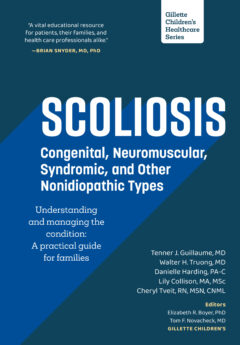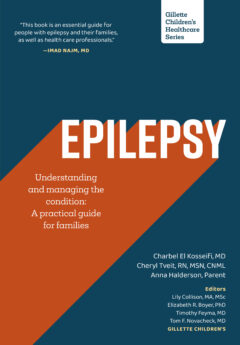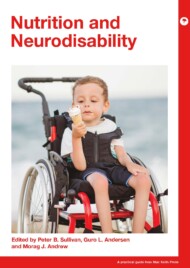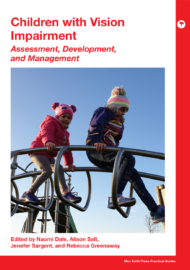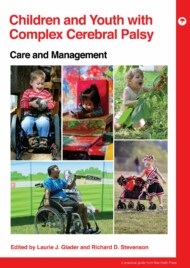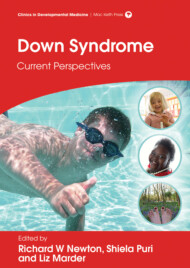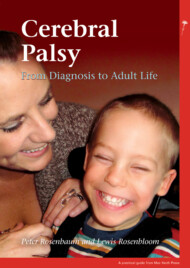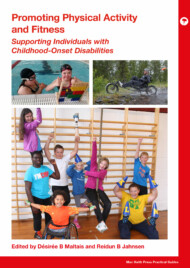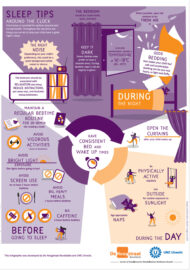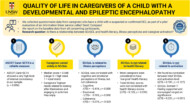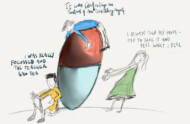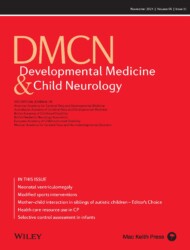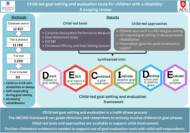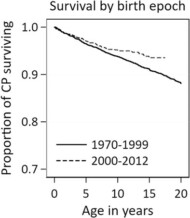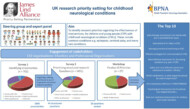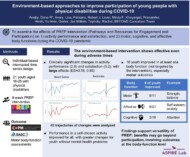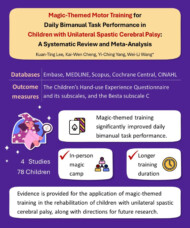Welcome
Start exploring here! We hope this will be a useful resource to help you find the information you need about cerebral palsy and other childhood-onset disabilities. We want to help you to find answers to your questions – so please let us know what else you would like us to cover. Here we are presenting videos, summaries, research information and other resources.
Read on for more
Ways we can help
1
Family-friendly Books
Discover our collection of family-friendly books featuring accessible, research-based insights. These titles include the perspectives of families and individuals with lived experience, offering valuable guidance while supporting parents on their journey.
2
Free Chapters
We have selected a range of chapters from our books, offering helpful insights and practical tips. Our chapters summaries highlight key points. View the full chapter to explore each topic in more depth.
3
The Knowledge Bank
Explore the answers to your questions here. Find out more about conditions, treatments, interventions, and all aspects of care. Follow signposts to find more in-depth, evidence-based information from Mac Keith Press content, as well as other great sources of knowledge.
4
Plain Language Summaries
Plain language summaries are an effective way of communicating scientific research to a wider audience. By presenting the key findings and significance of a study in easy-to-understand language, the content becomes more accessible to more people. Here we present summaries of papers published in Developmental Medicine & Child Neurology (DMCN).
5
Helpful Videos
Here you will find a collection of short videos from authors and editors summarising their work. They cover Developmental Medicine & Child Neurology (DMCN) articles, Mac Keith Press books and e-learning. The aim of the videos is to help viewers get a clear understanding of why the research is important, how it was carried out, and real-world implications.
Gillette Children’s Healthcare Series
The goal of the Gillette Children’s Healthcare Series is to empower families through a greater understanding of their condition and therefore help optimize outcomes for children, adolescents and adults living with these childhood-acquired and largely lifelong conditions.
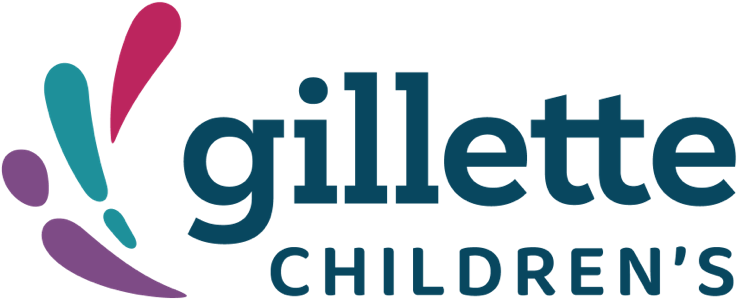
Free chapter downloads
The Knowledge Bank
Explore the answers to your questions here. Find out more about conditions, treatments, interventions, and all aspects of care. Follow signposts to find more in-depth, evidence-based information from Mac Keith Press content, as well as other great sources of knowledge.
What are some other events that look like epileptic seizures but are not seizures?
Some events that look like seizures but are not seizures are referred to as “seizure mimics” or “nonepileptic events”. These events can resemble seizures clinically but are not caused by abnormal electrical activity in the brain . Differential diagnosis is used to distinguish between true seizures and these mimics.
What are some other events that look like epileptic seizures but are not seizures?
This answer is adapted from section 1.4 of the Gillette Children’s Healthcare Series book on Epilepsy, understanding and managing the condition: a practical guide for families.
Some events that look like seizures but are not seizures are referred to as “seizure mimics” or “nonepileptic events”. These events can resemble seizures clinically but are not caused by abnormal electrical activity in the brain . Differential diagnosis is used to distinguish between true seizures and these mimics.
The key differences in symptoms between actual seizures and seizure mimics lie in the nature of the event, associated features, and how they respond to certain behaviors or stimuli. For example:
- Seizures often involve uncontrolled, abnormal electrical activity in the brain, which may result in altered consciousness, involuntary movements (like jerking or shaking), sensory changes, or emotional experiences. These events typically have an abrupt onset and cannot be voluntarily controlled.
- Seizure mimics, on the other hand, may include conditions such as:
- Tics and stereotypes, which may be momentarily suppressed by the individual—unlike seizures, which are not under voluntary control.
- Psychological or psychiatric conditions, such as panic attacks, hyperventilation, dissociative disorders, or episodic dyscontrol, which may be triggered by stress and typically do not involve a true change in consciousness.
- Cardiovascular events, such as heart rhythm abnormalities (e.g., long QT syndrome) or postural orthostatic changes, which can cause fainting or loss of consciousness but are not due to brain electrical activity.
Additionally, features like duration, presence of triggers, level of consciousness, and response to external stimuli (e.g., ability to be interrupted) help differentiate seizures from mimics. A thorough evaluation of the event’s context—such as sounds, posture, movements, and emotional state—is essential for accurate diagnosis.
For more information see the book. You can preview the full content of the book via the Flipbook on the product page.
What should I do if my child has an epileptic seizure?
If your child has a seizure, follow the seizure first aid guidelines provided by the Epilepsy Foundation, using the code STAY, SAFE, SIDE.
What should I do if my child has an epileptic seizure?
This answer is adapted from the Gillette Children’s Healthcare Series book on Epilepsy, understanding and managing the condition: a practical guide for families.
If your child has a seizure, follow the seizure first aid guidelines provided by the Epilepsy Foundation, using the code STAY, SAFE, SIDE:
- Stay with your child and remain calm. Do not leave them alone during the seizure.
- Keep them safe by removing nearby objects that could cause injury. Do not restrain them and do not put any objects in their mouth.
- Place them on their side, keeping their airway clear. Remove any tight clothes around the neck and put something small and soft under their head.
After the seizure, stay with your child, monitor their breathing, and provide reassurance. Call emergency services if it’s their first seizure, if the seizure lasts longer than 5 minutes, or occurs in water. Always seek medical evaluation after a first-time seizure to determine the cause and appropriate treatment.
Learn more about seizure first aid at epilepsy.com/firstaid
What are the different types of epileptic seizures?
The different types of seizures are categorized based on where they begin in the brain and how they affect consciousness and movement.
What are the different types of epileptic seizures?
This answer is adapted from section 2.3 of the Gillette Children’s Healthcare Series book on Epilepsy, understanding and managing the condition: a practical guide for families.
A seizure is first classified based on where it begins in the brain, termed the “seizure onset zone”.
- Focal onset seizures (also called focal seizures) begin in one area of the brain.
- Generalized onset seizures involve both sides of the brain from the start.
- Unknown onset seizure: A seizure with an unclear starting location in the brain. The seizure is either focal onset or generalized onset, but the exact onset zone cannot be determined. Seizures classified as unknown may be later classified as focal onset or generalized onset if more testing identifies the onset zone.
Some seizures may start as focal and then spread to involve both sides of the brain
.The second classification is based on the level of awareness during a seizure. The level of awareness is the individual’s state of consciousness during a seizure and includes their “knowledge of self or environment.”
- Aware: The individual does not experience a loss of consciousness and is aware that a seizure is happening. They may even be able to carry on a conversation or complete a task during a seizure. They are also likely to recall the events during a seizure after it ends.
- Impaired awareness: The individual may appear confused, is not aware a seizure is occurring, may not be able to respond, or may experience a loss of consciousness. After the seizure ends, the individual will typically not be able to fully recall the event.
Focal onset seizures are either aware or impaired awareness seizures. However, all generalized onset seizures are presumed to have impaired awareness.
The third classification is based on the signs and symptoms of the seizure—what the seizure “looks” like, or how the individual feels or acts during the seizure. These are known as motor (movement) signs and nonmotor (without movement) signs and symptoms:
Motor signs are uncontrolled physical movements experienced by the individual during the seizure that can be seen by others observing the individual. Nonmotor signs and symptoms are what the individual who is seizing experiences. These may be observed by others if they include a lack of movement, emotional outbursts, or a change in vital signs.
What happens in the brain during an epileptic seizure?
During a seizure, there is uncontrolled, abnormal electrical activity in the brain that originates in networks of multiple neurons, not just a single neuron. This abnormal activity disrupts the brain’s normal ability to regulate signals, leading to sudden, excessive, and synchronous firing of neurons.
What happens in the brain during an epileptic seizure?
This answer is adapted from chapter 3 of the the Gillette Children’s Healthcare Series book on Epilepsy, understanding and managing the condition: a practical guide for families.
Neurons are the smallest unit of the nervous system, and there are billions of them in the brain and spinal cord. They are electrically excitable cells and carry information (signals) between the central nervous system and the rest of the body as electrical impulses through a web-like structure from neuron to neuron, or from neurons to other cells in the body.
During a seizure, there is uncontrolled, abnormal electrical activity in the brain that originates in networks of multiple neurons, not just a single neuron. This abnormal activity disrupts the brain’s normal ability to regulate signals, leading to sudden, excessive, and synchronous firing of neurons. The electrical activity may manifest as changes in movement, sensation, awareness, or behavior.
Seizures occur when the seizure threshold—the level of electrical activity required to trigger a seizure—is reached. Neurons communicate via synapses, and during a seizure, this communication becomes disrupted, with some neurons being overstimulated (excited) and others inhibited, leading to the chaotic brain activity seen during a seizure.
The abnormal electrical patterns can be detected using an EEG, which may show epileptiform discharges—distinct waveform patterns associated with epileptic activity. These discharges may occur during a seizure (ictal) or between seizures (interictal). The underlying cause of the abnormal activity may be related to genetic, structural, or metabolic factors, but the result is a breakdown in typical brain function during the event.
Submit a question
Let us know what other questions you have. Are there specific topics you would you like us to cover?
Contact us now using the form.
Plain Language Summaries
Plain language summaries are an effective way of communicating scientific research to a wider audience. By presenting the key findings and significance of a study in easy-to-understand language, the content becomes more accessible to individuals with disabilities, parents, caregivers, and others. Here we present summaries of papers published in Developmental Medicine & Child Neurology (DMCN).
Helpful videos
Here you will find a collection of short videos from authors and editors summarising their work. They cover Developmental Medicine & Child Neurology (DMCN) articles, Mac Keith Press books and e-learning. The aim of the videos is to help viewers get a clear understanding of why the research is important, how it was carried out, and real-world implications.
UK research priority setting for childhood neurological conditions| Jill Cadwgan & Rhys Inward |DMCN
Contact us
Please feel free to contact us if you have any feedback or suggestions:
